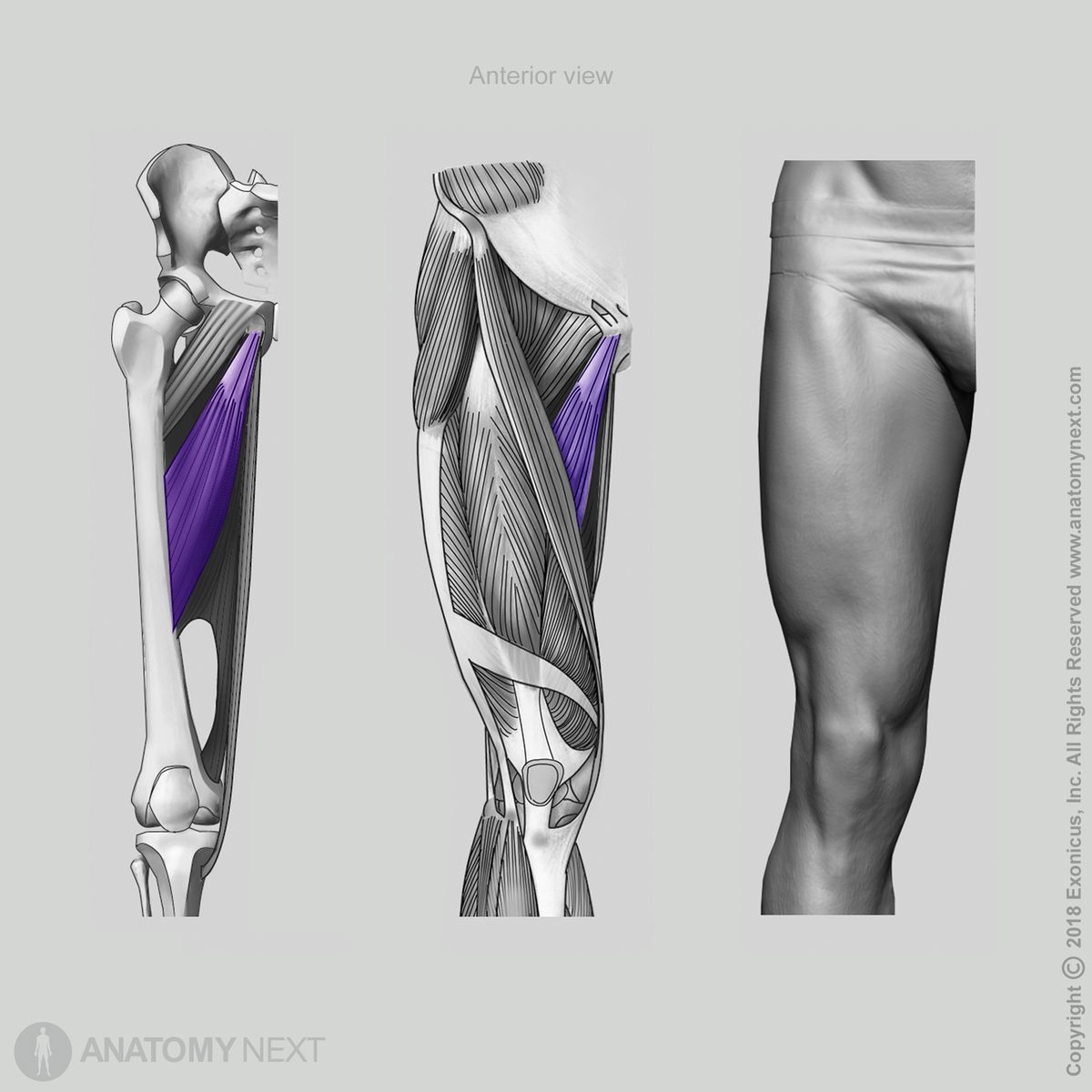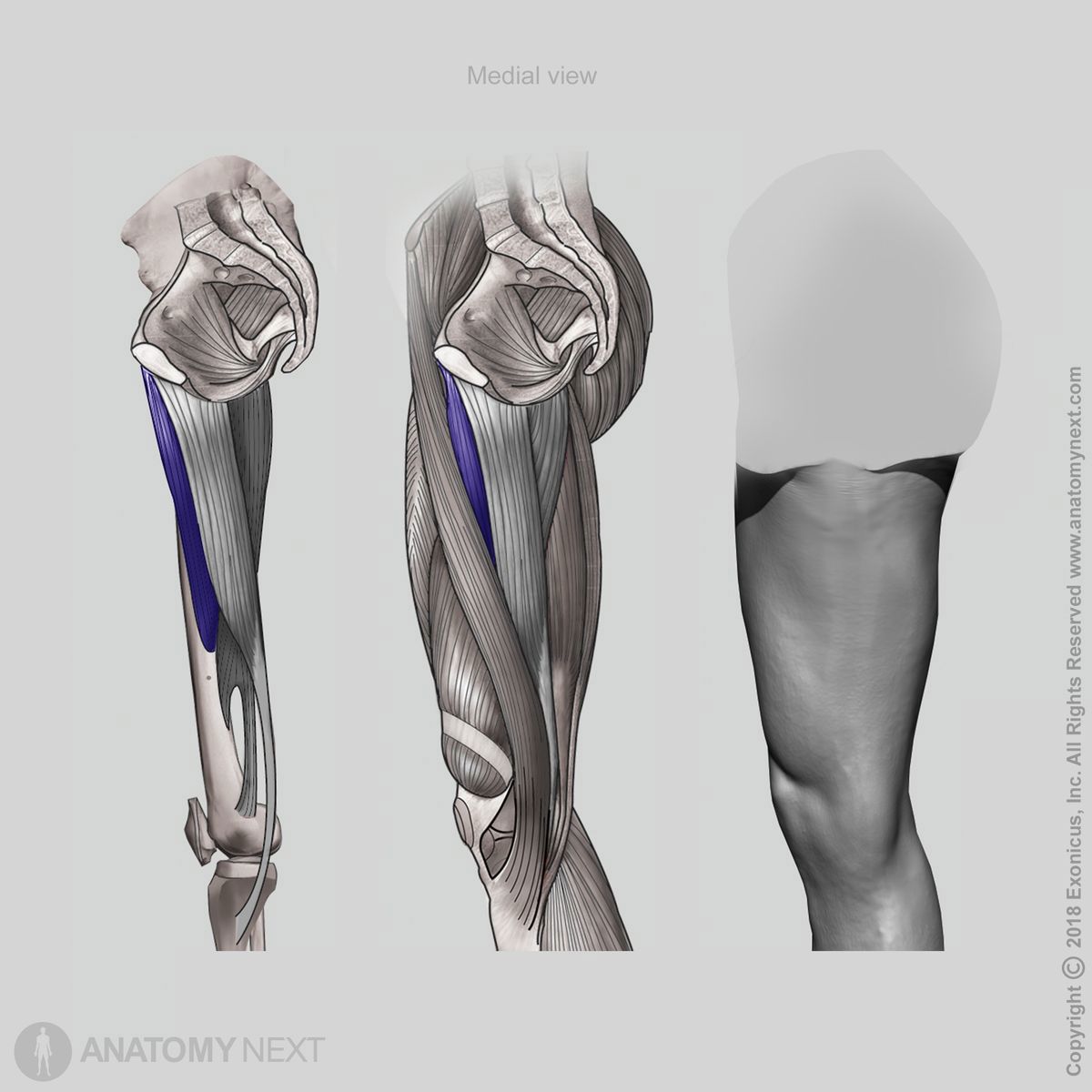- Anatomical terminology
- Skeletal system
- Joints
- Muscles
- Head muscles
- Neck muscles
- Muscles of upper limb
- Thoracic muscles
- Muscles of back
- Muscles of lower limb
- Pelvic muscles
- Muscles of thigh
- Anterior compartment
- Medial compartment
- Posterior compartment
- Muscles of leg
- Muscles of foot
- Heart
- Blood vessels
- Lymphatic system
- Nervous system
- Respiratory system
- Digestive system
- Urinary system
- Female reproductive system
- Male reproductive system
- Endocrine glands
- Eye
- Ear
Adductor longus
The adductor longus (Latin: musculus adductor longus) is a large triangular-shaped muscle of the thigh that extends between the pubis of the hip bone and femur. It is located in the medial compartment of the thigh and belongs to the muscle group called the hip adductors. As the name suggests, the primary function of the adductor longus is the adduction of the thigh.
| Adductor longus | |
| Origin | Body of pubis |
| Insertion | Middle third of medial lip of linea aspera (femur) |
| Action | Thigh flexion, thigh adduction, thigh external rotation, stabilization of pelvis |
| Innervation | Obturator nerve (L2 - L4) |
| Blood supply | Deep femoral, obturator and medial circumflex femoral arteries |

Origin
The adductor longus muscle originates from the body of the pubis inferior to the pubic crest and tubercle.
Insertion
The adductor longus inserts on the shaft of the femur. To be more precise, it ends on the middle third of the medial lip of the linea aspera.

Action
The adductor longus muscle provides thigh flexion, thigh adduction and external (lateral) rotation of the thigh at the hip joint. Also, it stabilizes the pelvis.
Innervation
The adductor longus is innervated by the obturator nerve (L2 - L4) that arises from the lumbar plexus.
Blood supply
The adductor longus muscle receives arterial blood supply from the deep femoral, medial circumflex femoral and obturator arteries. The first artery is a branch of the femoral artery, while the medial circumflex femoral artery branches off the deep femoral artery. Finally, the obturator artery arises from the internal iliac artery.